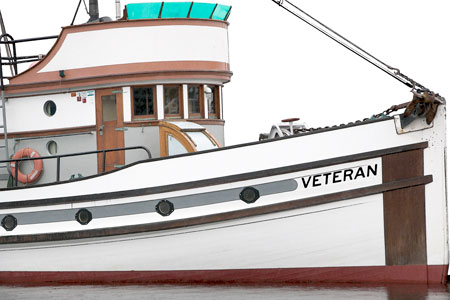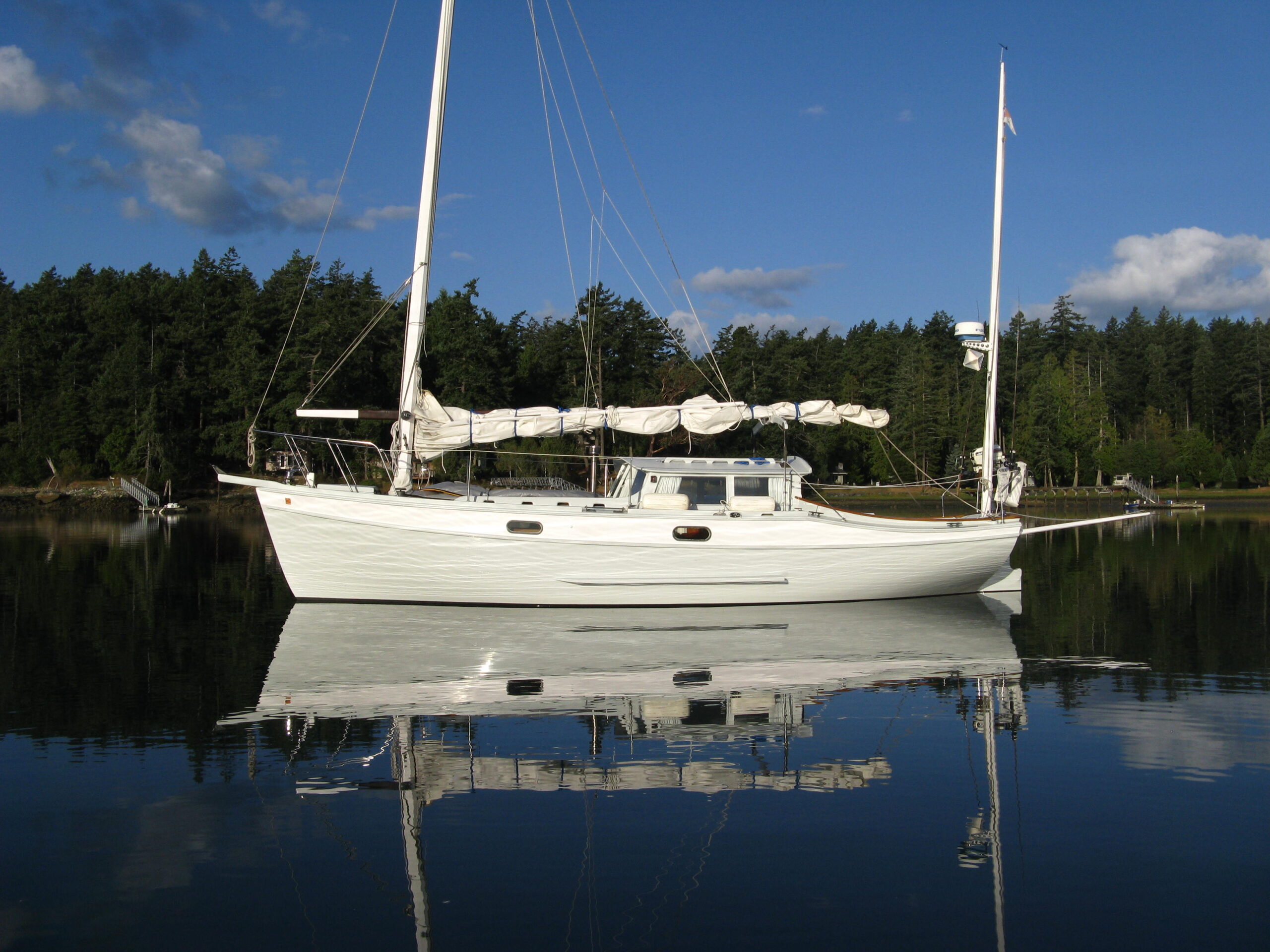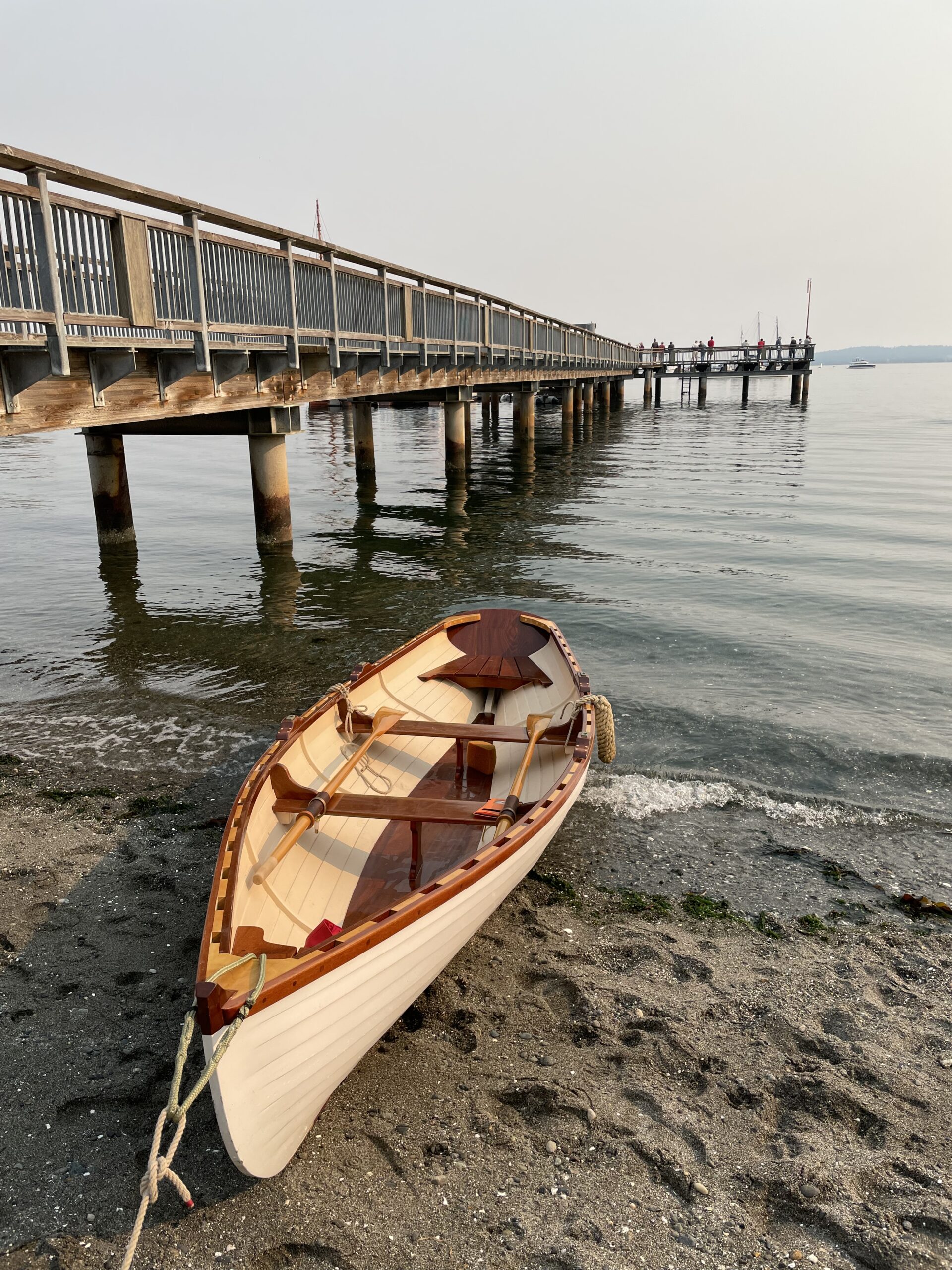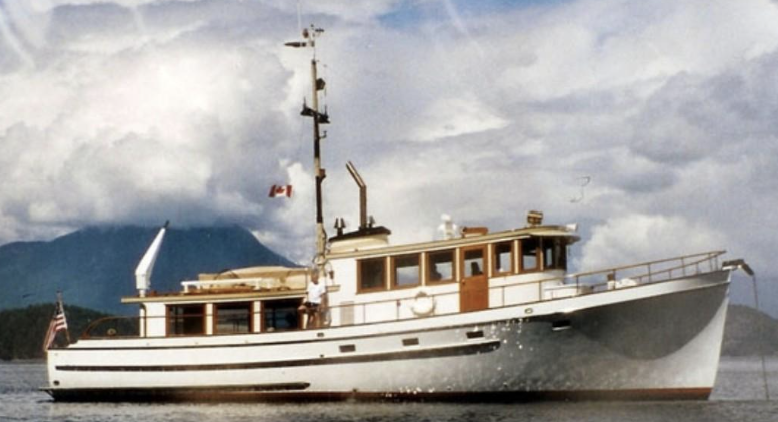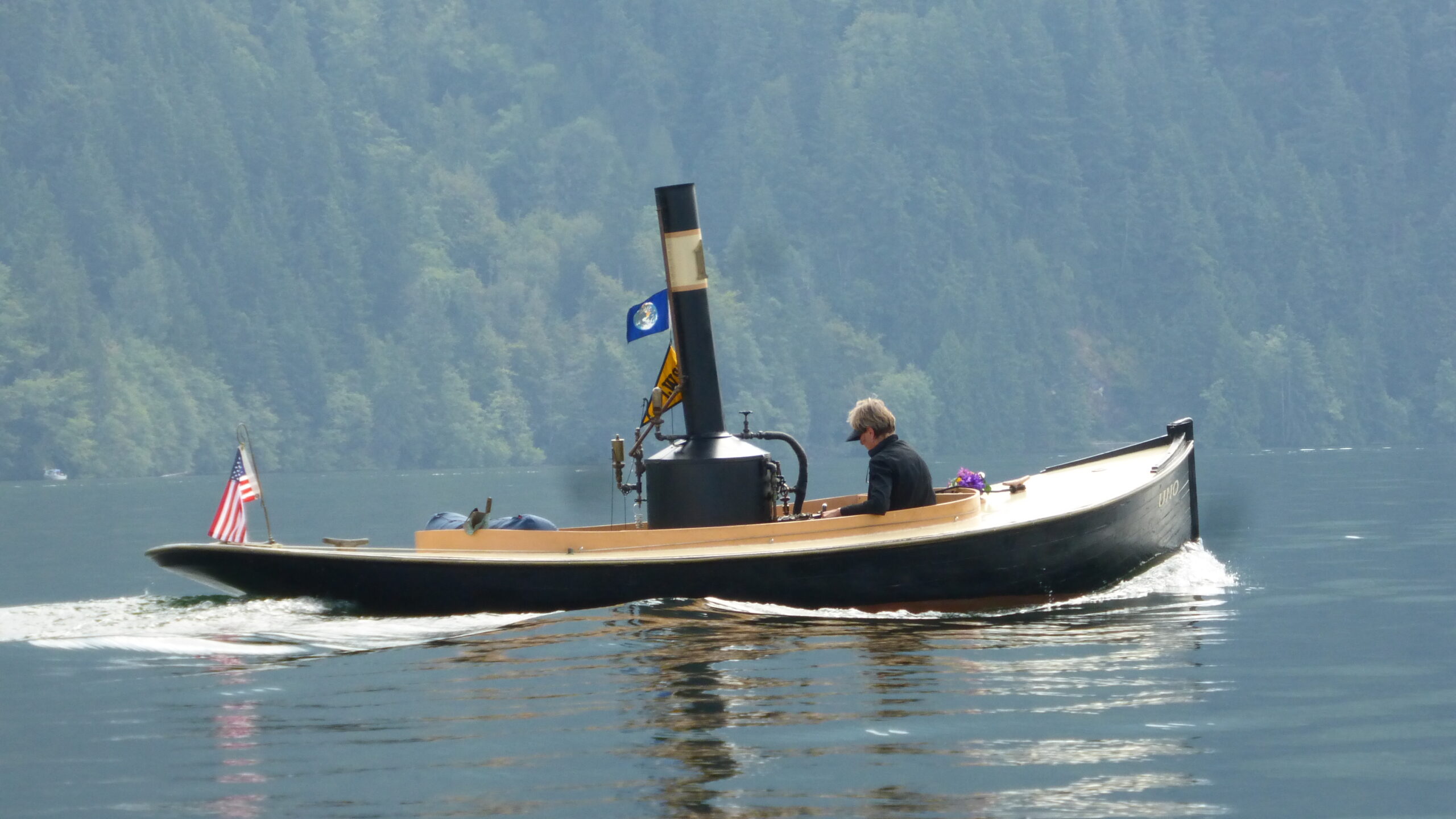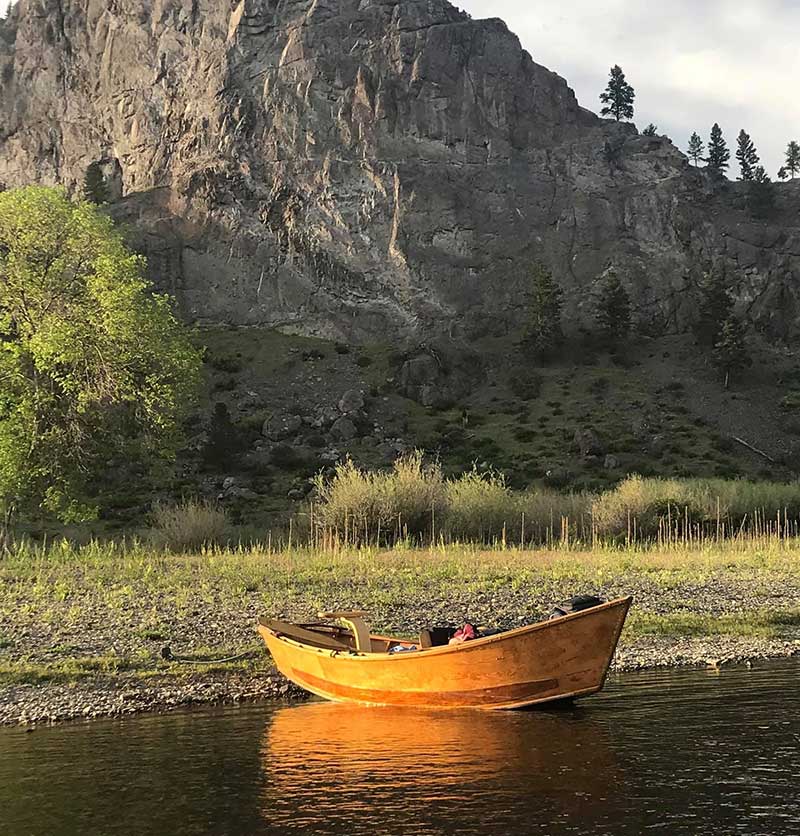
The Ghost fly is a Mckenzie River drift boat, built by Keith Steele in 1982. She is made of 16-foot lengths of knot-free old growth Douglas fir plywood with Port Orford Cedar ribs. Keith Steele was one of the premier production builders of drift boats in the 60s through 90s.
The Ghost Fly was a working boat on the trout fishing rivers of Eastern Idaho for 10 years before being sold to three wives who gifted the boat to their husbands. I bought her from one of the guys in 2016 and she had peeling paint, weather-cracked plywood, and leaks. I made extensive use of the expertise on Wooden Boat People’s website, where there are dozens of threads related to the construction, repair, and restoration of wooden drift boats.
While stripping the paint I discovered a painted fly on each side of the bow. Since I know the previous owners, I was able to track down the story behind the artwork. The original owner was a young starving fishing guide who paid for the boat by tying 500 dozen (yes, 6,000) trout flies and selling them to Bud Lilly’s fly shop in West Yellowstone. He commemorated the feat by having a friend paint a Green Drake no-hackle fly on each side of the bow.
After recording and tracing the artwork I sanded it off and discovered that the paint had protected the varnish from yellowing, which left a bright shadow of the fly. Hence, the name Ghost Fly. After completing the repairs I had a local artist paint a royal coachman fly on the port bow since it is a fly that I first used when being taught to fly fish by my grandfather and father.
A UHMW plastic “shoe” had been added to the bottom of the boat for protection from rocks. The boat originally had a sacrificial plywood “shoe”, which had been removed. I replaced this with a fiberglass base since the bottom had several hundred ring nail holes in it from frequent efforts to reattach the UHMW plastic which was subject to a lot of shrinkage and expansion. I finished the boat with two coats of epoxy on the exterior followed by 5 coats of varnish.
The interior was protected with teak oil since it is easier to maintain and provides a relatively sticky floor for standing fishermen, compared to varnished floors. I repaired a number of cracks, dings, and holes in the boat and I was able to talk to the previous owners to identify where each damage occurred. To tell her story I added labels to each repair noting the river and specific rapids that inflicted the damage. The Ghost Fly plies the famous blue-ribbon trout streams of western Montana in search “in the hopes that a fish will rise” and is a great platform for family floats with grandkids.

